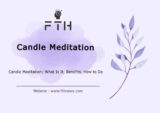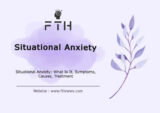
Chakras, the focal points of energy within the body, hold profound significance in various spiritual traditions. While Buddhism emphasizes four main chakras, Hinduism expounds on seven chakras, each intricately linked to the body’s energy channels. In this article, we’ll delve into the essence of chakras, exploring their significance and practical methods for cleansing and balancing them.
What is a Chakra?
The term “chakra,” originating from ancient Indian languages and revered in Hinduism, Buddhism, and Jainism, translates to “wheel” in English. These energy centers are often depicted as spinning wheels of light, symbolizing the flow of vital energy within the body.
Conceptually, chakras represent more than mere physical entities; they are gateways to understanding the intricate connection between mind, body, and spirit. Positioned along the central axis of the body, from the base of the spine to the crown of the head, each chakra serves as a focal point for specific qualities and functions.
Their balanced functioning is crucial for maintaining holistic well-being, influencing not only physical health but also emotional stability and spiritual evolution. When chakras are open and harmonious, energy flows freely throughout the body, facilitating vitality, clarity, and inner peace.
However, blockages or imbalances in these energy centers can disrupt the natural flow of energy, leading to various physical, mental, and emotional ailments. By understanding the significance of chakras and adopting practices to cleanse and align them, individuals can embark on a transformative journey toward optimal health and spiritual enlightenment.
In essence, chakras serve as sacred portals through which we can tap into the vast reservoir of our inner potential, fostering a profound sense of wholeness and connection with the universe.
Understanding the Seven Chakras:
In Hindu tradition, the seven primary chakras are recognized for their pivotal roles in governing different aspects of human existence. Let’s explore each chakra briefly:
Root Chakra (Muladhara):
Situated at the base of the spine, the Root Chakra, known as Muladhara in Sanskrit, serves as the foundation of our energetic system. Symbolizing our connection to the earth and the physical realm, this chakra embodies qualities of stability, security, and primal survival instincts.
When unblocked and balanced, the Root Chakra fosters a profound sense of rootedness and inner strength, empowering individuals to navigate life’s challenges with confidence and resilience. It instills a deep-seated trust in oneself and the world, allowing one to feel secure and supported in their journey.
However, imbalances in the Root Chakra can manifest in various ways, such as feelings of insecurity, fear, or instability. This may result from past traumas, familial or ancestral issues, or a lack of connection to one’s roots. In such cases, grounding practices and chakra-balancing techniques become essential for restoring equilibrium.
Balancing the Root Chakra is vital not only for maintaining physical well-being but also for cultivating a strong sense of belonging and connection to the world around us. By nurturing this foundational energy center, individuals can establish a solid groundwork for personal growth and spiritual evolution.
Root Chakra Attributes:
- Location: Base of the spine, between the anus and genitals.
- Color: Red, symbolizing vitality, strength, and vitality.
- Element: Earth, representing stability, security, and grounding.
- Associated Stones: Hematite, red jasper, black tourmaline, and garnet.
- Affirmations: “I am safe and secure.”, “I am rooted and grounded in the present moment.”, “I trust in the abundance of the universe.”
Balancing Techniques for the Root Chakra:
- Grounding Exercises: Engage in activities that promote a sense of connection to the earth, such as walking barefoot in nature, gardening, or spending time outdoors.
- Root Chakra Meditation: Visualize a red glowing ball of light at the base of your spine, breathing deeply into this area to cleanse and energize the Root Chakra.
- Yoga Poses: Practice grounding yoga poses like Tadasana (Mountain Pose), Virabhadrasana (Warrior Pose), and Balasana (Child’s Pose) to strengthen and stabilize the Root Chakra.
- Use of Essential Oils: Incorporate earthy scents such as patchouli, cedarwood, or vetiver into your aromatherapy practice to promote grounding and stability.
- Affirmation and Visualization: Repeat affirmations that reinforce feelings of safety, security, and belonging while visualizing roots extending from your body into the earth, anchoring you firmly in place.
By nurturing and balancing the Root Chakra, individuals can cultivate a profound sense of stability, security, and empowerment, laying the groundwork for a life filled with resilience, abundance, and inner peace.
Sacral Chakra (Svadisthana):
Nestled just below the navel, the Sacral Chakra, known as Svadisthana in Sanskrit, is the seat of our creative expression, emotional vitality, and sensual energy. This vibrant energy center governs not only our creativity and sexuality but also our ability to experience pleasure, joy, and emotional fulfillment.
When the Sacral Chakra is balanced and open, it radiates a sense of joy, spontaneity, and passion for life. Individuals in harmony with their Sacral Chakra are adept at navigating their emotions, embracing their sensuality, and expressing their creativity freely. They exude warmth, empathy, and a zest for life that inspires those around them.
However, imbalances in the Sacral Chakra can manifest in various ways, disrupting our emotional equilibrium and hindering our ability to experience pleasure and intimacy. Blockages in this energy center may result from past traumas, societal conditioning, or a lack of self-expression, leading to feelings of emotional stagnation, guilt, or shame.
Balancing the Sacral Chakra is essential for reconnecting with our innate creativity, sensuality, and emotional resilience. By embracing our authentic selves and honoring our desires and emotions without judgment, we can unlock the transformative power of this sacred energy center.
Sacral Chakra Attributes:
- Location: Below the navel, in the lower abdomen.
- Color: Orange, symbolizing creativity, passion, and vitality.
- Element: Water, representing fluidity, emotions, and the flow of life.
- Associated Stones: Carnelian, orange calcite, moonstone, and amber.
- Affirmations: “I embrace my creativity and express myself freely.”, “I am worthy of pleasure and joy in every aspect of my life.”, “I honor my emotions and allow them to flow freely.”
Balancing Techniques for the Sacral Chakra:
- Creative Expression: Engage in activities that stimulate your creativity and bring you joy, such as painting, dancing, or writing.
- Sacral Chakra Meditation: Visualize a vibrant orange ball of light in your lower abdomen, breathing deeply into this area to cleanse and energize the Sacral Chakra.
- Yoga Poses: Practice hip-opening yoga poses like Supta Baddha Konasana (Reclining Bound Angle Pose) and Bhujangasana (Cobra Pose) to release tension and activate the Sacral Chakra.
- Use of Essential Oils: Incorporate sensual scents such as jasmine, ylang-ylang, or sandalwood into your aromatherapy practice to awaken the senses and promote emotional balance.
- Emotional Release: Allow yourself to feel and express your emotions fully, without judgment or suppression, to release any pent-up energy and restore emotional equilibrium.
By nurturing and balancing the Sacral Chakra, individuals can tap into their innate creativity, passion, and emotional vitality, fostering a deeper connection with themselves and others, and embracing the full spectrum of human experience with openness and authenticity.
Solar Plexus Chakra (Manipura):
Located between the navel and the lower chest, the Solar Plexus Chakra, known as Manipura in Sanskrit, serves as the center of personal power, self-esteem, and authentic identity. Like the radiant sun at its core, this energy center shines brightly, illuminating our path with clarity, confidence, and vitality.
The Solar Plexus Chakra is the seat of our individuality and willpower, governing our ability to assert ourselves authentically and take decisive action in alignment with our true selves. When balanced and energized, it instills a profound sense of self-assurance, inner strength, and unwavering confidence in one’s abilities and decisions.
Individuals with a harmonious Solar Plexus Chakra exude a magnetic presence, radiating charisma, and self-assuredness that inspires trust and respect in others. They approach life with a sense of purpose and determination, unafraid to pursue their goals and ambitions with passion and conviction.
However, imbalances in the Solar Plexus Chakra can manifest in various ways, undermining our self-esteem and inhibiting our ability to assert ourselves authentically. Blockages in this energy center may result from past experiences of criticism, rejection, or a lack of self-worth, leading to feelings of insecurity, self-doubt, or powerlessness.
Balancing the Solar Plexus Chakra is essential for reclaiming our personal power, cultivating self-confidence, and embracing our true identity. By honoring our unique strengths and talents, and trusting in our ability to navigate life’s challenges with grace and resilience, we can unlock the full potential of this transformative energy center.
Solar Plexus Chakra Attributes:
- Location: Between the navel and the lower chest.
- Color: Yellow, symbolizing confidence, vitality, and self-assurance.
- Element: Fire, representing transformation, willpower, and personal empowerment.
- Associated Stones: Citrine, yellow calcite, tiger’s eye, and golden topaz.
- Affirmations: “I am worthy of love, respect, and success.”, “I stand in my power and trust my inner wisdom.”, “I embrace my authentic self and live with purpose and passion.”
Balancing Techniques for the Solar Plexus Chakra:
- Self-Reflection: Take time to reflect on your strengths, accomplishments, and areas for growth, cultivating a deeper sense of self-awareness and self-acceptance.
- Solar Plexus Chakra Meditation: Visualize a vibrant yellow sun radiating from your solar plexus, filling you with warmth, confidence, and empowerment.
- Yoga Poses: Practice core-strengthening yoga poses like Navasana (Boat Pose) and Ardha Chandrasana (Half Moon Pose) to activate and balance the Solar Plexus Chakra.
- Use of Essential Oils: Incorporate invigorating scents such as lemon, ginger, or bergamot into your aromatherapy practice to boost confidence and vitality.
- Positive Affirmations: Repeat affirmations that reinforce feelings of self-worth, personal power, and authenticity, affirming your inherent value and potential.
By nurturing and balancing the Solar Plexus Chakra, individuals can reclaim their personal power, cultivate unwavering self-confidence, and embrace their true identity with courage and conviction, empowering themselves to live authentically and pursue their dreams with purpose and passion.
Heart Chakra (Anahata):
Positioned in the center of the chest, the Heart Chakra, known as Anahata in Sanskrit, is the radiant center of love, compassion, and inner harmony. Like a luminous beacon of light, this energy center emanates warmth, acceptance, and profound interconnectedness with oneself and the world around us.
The Heart Chakra serves as the bridge between the lower chakras, associated with earthly matters, and the higher chakras, linked to spiritual awakening. It is the seat of unconditional love, compassion, and empathy, inviting us to embrace ourselves and others with open hearts and minds.
When the Heart Chakra is open and balanced, it enables us to experience deep and meaningful connections with ourselves, others, and the universe. We approach life with a sense of compassion, forgiveness, and understanding, allowing love to flow freely in all aspects of our existence.
Individuals with a harmonious Heart Chakra embody qualities of kindness, generosity, and emotional resilience. They are capable of extending compassion and empathy towards themselves and others, fostering healing and reconciliation in relationships, and cultivating inner peace amidst life’s challenges.
However, imbalances in the Heart Chakra can manifest in various ways, disrupting our ability to give and receive love unconditionally. Blockages in this energy center may result from past hurts, betrayals, or a lack of self-love, leading to feelings of isolation, resentment, or emotional detachment.
Balancing the Heart Chakra is essential for cultivating a deep sense of love, compassion, and inner peace within ourselves and fostering harmonious relationships with others. By practicing self-love, forgiveness, and acts of kindness, we can open our hearts to the transformative power of love and create a more compassionate and interconnected world.
Heart Chakra Attributes:
- Location: Center of the chest, above the heart.
- Color: Green, symbolizing love, compassion, and healing.
- Element: Air, representing freedom, openness, and expansion.
- Associated Stones: Rose quartz, emerald, green aventurine, and jade.
- Affirmations: “I am worthy of love and compassion, both from myself and others.”, “I forgive myself and others, releasing any resentment or pain from my heart.”, “I am open to giving and receiving love unconditionally.”
Balancing Techniques for the Heart Chakra:
- Heart-Centered Meditation: Visualize a radiant green light glowing in your chest, expanding with each breath to fill your entire being with love, compassion, and inner peace.
- Yoga Poses: Practice heart-opening yoga poses like Bhujangasana (Cobra Pose), Ustrasana (Camel Pose), and Anahatasana (Heart Melting Pose) to open and balance the Heart Chakra.
- Use of Essential Oils: Incorporate soothing scents such as rose, lavender, or bergamot into your aromatherapy practice to evoke feelings of love, peace, and emotional balance.
- Acts of Kindness: Practice random acts of kindness towards yourself and others, fostering a sense of connection, compassion, and unity.
- Gratitude Practice: Cultivate an attitude of gratitude by reflecting on the blessings in your life, expressing appreciation for the love and support you receive from others and the universe.
By nurturing and balancing the Heart Chakra, individuals can awaken the transformative power of love within themselves, fostering deep connections, healing relationships, and creating a more compassionate and harmonious world for all beings to thrive.
Throat Chakra (Vishuddha):
Situated at the throat, the Throat Chakra, known as Vishuddha in Sanskrit, serves as the gateway to authentic self-expression, communication, and truth. Like a powerful conduit of energy, this energy center empowers us to articulate our thoughts, feelings, and inner truths with clarity, honesty, and integrity.
The Throat Chakra governs not only verbal communication but also non-verbal expression, including gestures, body language, and creative endeavors. It is the seat of our voice and our ability to convey our deepest thoughts, emotions, and aspirations to the world around us.
When the Throat Chakra is open and balanced, it enables us to communicate with confidence, authenticity, and sincerity, fostering meaningful connections and mutual understanding with others. We speak our truth with conviction, assertiveness, and compassion, allowing our authentic selves to shine brightly in every interaction.
Individuals with a harmonious Throat Chakra are adept at expressing themselves creatively, verbally, and artistically, inspiring others with their clarity of expression and depth of insight. They communicate with empathy and empathy, using their words to uplift, inspire, and empower those around them.
However, imbalances in the Throat Chakra can manifest in various ways, disrupting our ability to communicate effectively and express ourselves authentically. Blockages in this energy center may result from fear of judgment, past experiences of criticism, or a lack of self-confidence, leading to communication issues, feelings of suppression, or a sense of being unheard.
Balancing the Throat Chakra is essential for reclaiming our voice, honoring our truth, and expressing ourselves authentically in the world. By embracing our unique perspective, speaking our truth with courage, and listening to the wisdom of our inner voice, we can unlock the transformative power of self-expression and create meaningful connections with others.
Throat Chakra Attributes:
- Location: Throat area, at the base of the neck.
- Color: Light blue or turquoise, symbolizing communication, self-expression, and creativity.
- Element: Sound, representing resonance, vibration, and expression.
- Associated Stones: Aquamarine, turquoise, blue lace agate, and sodalite.
- Affirmations: “I communicate my thoughts and feelings with clarity and confidence.”, “I express myself authentically and assertively in all situations.”, “My voice matters, and I am worthy of being heard.”
Balancing Techniques for the Throat Chakra:
- Throat Chakra Meditation: Visualize a soothing blue light radiating from your throat, cleansing and energizing the Throat Chakra with each breath you take.
- Journaling: Practice free-writing or journaling to explore your thoughts, emotions, and inner truths, allowing your authentic voice to emerge on the page.
- Creative Expression: Engage in creative activities such as writing, singing, or painting to express yourself artistically and connect with your inner voice.
- Deep Breathing Exercises: Practice deep breathing techniques to calm the mind, release tension, and create space for clear and authentic communication.
- Active Listening: Cultivate the art of active listening by fully engaging with others’ perspectives, validating their experiences, and responding with empathy and understanding.
By nurturing and balancing the Throat Chakra, individuals can reclaim their voice, honor their truth, and express themselves authentically in the world, fostering meaningful connections and mutual understanding with others.
Third Eye Chakra (Ajna):
Nestled between the eyebrows, the Third Eye Chakra, known as Ajna in Sanskrit, serves as the gateway to intuition, insight, and higher consciousness. Like a luminous beacon of inner wisdom, this energy center awakens our innate ability to perceive beyond the physical realm and access deeper truths about ourselves and the universe.
The Third Eye Chakra embodies the seat of inner vision and intuitive knowing, inviting us to transcend the limitations of the material world and connect with the vast expanse of universal wisdom. It is the center of imagination, foresight, and spiritual insight, offering glimpses into the hidden dimensions of reality and guiding us on the path of self-discovery and enlightenment.
When the Third Eye Chakra is open and balanced, it empowers us to see beyond the veil of illusion, discerning the underlying truths and patterns that govern our lives. We trust our inner guidance and intuition, navigating life’s challenges with clarity, purpose, and grace. Activation of this chakra enhances our perception of reality, deepening our understanding of ourselves and the interconnectedness of all existence.
Individuals with a harmonious Third Eye Chakra possess heightened levels of intuition, insight, and spiritual awareness. They perceive the world through a lens of clarity and understanding, recognizing the subtle energies that shape their experiences and guiding their actions with wisdom and discernment.
However, imbalances in the Third Eye Chakra can manifest in various ways, disrupting our ability to access our inner wisdom and intuition. Blockages in this energy center may result from skepticism, fear of the unknown, or a disconnection from our spiritual essence, leading to confusion, indecision, or a sense of spiritual stagnation.
Balancing the Third Eye Chakra is essential for expanding our consciousness, deepening our spiritual practice, and attuning to the higher truths of existence.
Third Eye Chakra Attributes:
- Location: Between the eyebrows, at the center of the forehead.
- Color: Indigo or deep purple, symbolizing intuition, insight, and spiritual awareness.
- Element: Light, representing illumination, clarity, and inner vision.
- Associated Stones: Amethyst, purple fluorite, lapis lazuli, and sodalite.
- Affirmations: “I trust my intuition and inner guidance to lead me on the right path.”, “I am connected to the wisdom of the universe and trust in the unfolding of my journey.”, “I see beyond the illusions of the material world and perceive the truth of my existence.”
Balancing Techniques for the Third Eye Chakra:
- Third Eye Chakra Meditation: Close your eyes and focus your attention on the area between your eyebrows, envisioning a radiant indigo light pulsating with each breath you take. Allow yourself to enter a state of deep relaxation and inner stillness, opening yourself to the wisdom of your intuition.
- Visualization: Visualize yourself surrounded by a sphere of indigo light, expanding your awareness and connecting you to the higher realms of consciousness. Envision yourself receiving insights and guidance from the universe, trusting in the wisdom of your inner vision.
- Mindfulness Practices: Cultivate mindfulness in your daily life by being fully present in each moment, observing your thoughts and emotions without judgment, and attuning to the subtle energies that shape your experiences.
- Journaling: Keep a journal to record your dreams, intuitive insights, and synchronicities, allowing you to deepen your connection to your inner wisdom and spiritual guidance.
- Nature Connection: Spend time in nature to reconnect with the rhythms of the earth and attune to the natural world. Practice forest bathing, meditation, or mindful walking to quiet the mind and open yourself to the whispers of the universe.
By nurturing and balancing the Third Eye Chakra, individuals can awaken their inner wisdom, expand their consciousness, and embark on a journey of spiritual growth and self-realization, guiding them towards a deeper understanding of themselves and the universe.
Crown Chakra (Sahasrara):
Positioned at the crown of the head, the Crown Chakra, known as Sahasrara in Sanskrit, stands as the pinnacle of spiritual evolution and divine consciousness. Like a radiant beacon of light, this energy center symbolizes our innate connection to the divine and the infinite wisdom of the universe.
The Crown Chakra serves as the gateway to higher states of consciousness, transcending the boundaries of the material world and offering a glimpse into the eternal truths that govern existence. It embodies the essence of pure awareness, unity, and enlightenment, inviting us to awaken to the divine essence that resides within us and all creation.
Opening the Crown Chakra fosters a profound sense of unity and oneness with the universe, dissolving the illusion of separation and egoic identity. It is the culmination of our spiritual journey, leading us to embrace the interconnectedness of all life and the eternal presence of divine love and wisdom.
Individuals with an awakened Crown Chakra experience a deep sense of peace, serenity, and spiritual fulfillment. They embody the qualities of divine wisdom, compassion, and unconditional love, radiating light and blessings to all beings. In this state of unity consciousness, they recognize themselves as integral aspects of the cosmic tapestry, co-creators of reality, and vessels of divine grace.
However, imbalances in the Crown Chakra can manifest in various ways, disrupting our connection to the divine and hindering our spiritual growth. Blockages in this energy center may result from attachment to material desires, egoic identification, or a lack of spiritual practice, leading to feelings of disconnection, existential emptiness, or a sense of spiritual stagnation.
Balancing the Crown Chakra is essential for transcending the limitations of the ego and accessing higher dimensions of consciousness.
Crown Chakra Attributes:
- Location: Crown of the head, above the skull.
- Color: Violet or white, symbolizing spirituality, purity, and divine connection.
- Element: Divine consciousness, representing the eternal presence of divine wisdom and love.
- Associated Stones: Clear quartz, amethyst, selenite, and diamond.
- Affirmations: “I am one with the divine presence that flows through all creation.”, “I am open to receiving divine guidance and wisdom.”, “I surrender to the infinite flow of love and light that permeates the universe.”
Balancing Techniques for the Crown Chakra:
- Crown Chakra Meditation: Sit in a comfortable position and visualize a radiant violet or white light streaming down from the heavens, bathing your entire being in divine grace and illumination. Allow yourself to dissolve into this luminous presence, surrendering to the infinite wisdom and love of the universe.
- Prayer and Devotion: Cultivate a daily practice of prayer, devotion, or sacred rituals to deepen your connection to the divine and align with the higher purpose of your soul.
- Contemplation and Self-Inquiry: Reflect on the nature of existence, the meaning of life, and the eternal truths that govern the universe. Ask yourself profound questions and contemplate the mysteries of existence with an open heart and mind.
- Service and Compassion: Engage in acts of selfless service, kindness, and compassion to uplift others and align with the divine principle of love in action.
- Surrender and Trust: Release attachments to egoic desires and surrender to the divine will, trusting in the inherent goodness and wisdom of the universe to guide you on your spiritual journey.
By nurturing and balancing the Crown Chakra, individuals can awaken to the infinite wisdom, love, and grace that reside within them and all creation, leading them towards spiritual enlightenment, unity consciousness, and divine fulfillment.
Balancing and Cleansing Chakras:
Achieving harmony within the chakras involves a multifaceted approach aimed at cleansing, energizing, and balancing these vital energy centers. By incorporating various practices into our daily lives, we can facilitate the free flow of energy throughout the body, promoting holistic well-being and spiritual growth. Here are some effective techniques for balancing and cleansing the chakras:
Meditation:
Regular meditation serves as a cornerstone practice for chakra balancing, offering a powerful means of cleansing and aligning the energy centers. By focusing our attention on individual chakras or the entire system, we can release energetic blockages, restore balance, and cultivate a deep sense of inner peace and harmony.
Yoga:
Practicing chakra-focused yoga poses, known as asanas, is another effective way to activate and balance the corresponding energy centers. By engaging in specific postures designed to target each chakra, we can stimulate the flow of prana (life force energy) throughout the body, promoting physical, mental, and emotional well-being.
Energy Healing:
Modalities such as Reiki, acupuncture, and crystal therapy offer powerful tools for chakra cleansing and healing. These practices work on subtle energetic levels to remove blockages, dissolve stagnant energy, and restore the natural flow of vitality within the chakras. Through gentle touch, intention, and the use of sacred symbols or crystals, practitioners can facilitate profound energetic shifts, promoting healing and transformation.
Affirmations:
Repeating positive affirmations targeted at each chakra can help reprogram limiting beliefs and promote healing on a subconscious level. By consciously affirming our inherent worth, strength, and vitality, we can dissolve negative patterns and align with the divine essence that resides within us. Affirmations serve as potent tools for chakra activation, fostering self-love, empowerment, and spiritual growth.
Aromatherapy:
Harnessing the power of essential oils resonant with specific chakras enhances energetic balance and promotes overall well-being. By diffusing or applying essential oils associated with each energy center, such as lavender for the Crown Chakra or lemon for the Solar Plexus Chakra, we can uplift the spirit, soothe the mind, and restore harmony to the chakras. Aromatherapy serves as a delightful and aromatic way to support our chakra balancing efforts, inviting us to experience the healing properties of nature’s botanical essences.
Incorporating these practices into our daily routine can help us maintain optimal energetic balance, promoting health, vitality, and spiritual alignment. By nurturing our chakras and cultivating a deep connection to our inner wisdom and divine essence, we can embark on a journey of profound healing, transformation, and self-discovery.
Assessing Chakra Health:
Understanding the state of your chakras is crucial for maintaining holistic wellness and promoting inner harmony. Signs of blocked or imbalanced chakras can manifest in various ways, including:
- Fatigue: Persistent feelings of tiredness or low energy levels may indicate imbalances in one or more chakras, disrupting the free flow of energy throughout the body.
- Emotional Distress: Unresolved emotional issues, mood swings, or heightened sensitivity may point to blockages in specific chakras, affecting our emotional well-being and overall resilience.
- Physical Ailments: Chronic health issues, discomfort, or pain in certain areas of the body may be indicative of underlying imbalances within the corresponding chakras.
By paying attention to your body and emotions, you can become attuned to subtle cues and sensations that signal areas requiring attention and healing. Through mindful observation and self-reflection, you can identify imbalances and implement appropriate balancing techniques to restore harmony and vitality to your energy system.
What Does Science Say About the Chakras?
While the concept of chakras originates from ancient spiritual traditions, scientific research on the existence and function of chakras is limited. Mainstream scientific discourse typically focuses on physiological and neurological explanations for health and wellness, rather than on subtle energy systems such as the chakras.
However, some scientists and researchers have explored the potential correlations between chakras and the body’s physiological systems, particularly the nervous system. The nervous system, which includes the brain, spinal cord, and peripheral nerves, plays a crucial role in regulating various bodily functions and responses.
Proponents of the chakra system suggest that the seven main chakras may correspond to major nerve plexuses or centers along the spinal column, influencing the flow of neural impulses and information throughout the body. These correlations have led some researchers to hypothesize that imbalances within the chakras may affect the functioning of the nervous system, potentially impacting health and well-being.
While scientific evidence supporting the existence of chakras in a spiritual sense is lacking, there is ongoing interest in exploring the potential connections between energy-based healing practices and physiological health outcomes. Further research and investigation are needed to elucidate the mechanisms by which chakras may influence health and to bridge the gap between ancient wisdom and modern science.
In conclusion, while the existence and function of chakras may not be fully understood or accepted within mainstream scientific circles, their significance in traditional healing systems and holistic wellness practices continues to resonate with millions of people worldwide. Whether viewed as symbolic representations of energetic anatomy or as tangible conduits of subtle energy, the chakras offer profound insights into the interconnectedness of mind, body, and spirit, guiding individuals on a journey of self-discovery, healing, and transformation.
Do Chakras Affect Our Health?
Chakras are intricately connected to our physical, emotional, and spiritual well-being, influencing various aspects of our health and vitality. According to traditional Eastern healing systems such as Ayurveda and Traditional Chinese Medicine, imbalances or blockages within the chakras can lead to disharmony in the body and mind, resulting in illness and disease.
Each chakra corresponds to specific organs, glands, and physiological functions within the body, regulating the flow of energy and information to these areas. When the chakras are balanced and harmonious, energy flows freely throughout the body, supporting optimal health and vitality. However, when the chakras become blocked or imbalanced, the flow of energy is disrupted, leading to physical, emotional, and psychological ailments.
Root Chakra (Muladhara):
An imbalance in the Root Chakra, located at the base of the spine, may manifest as issues related to survival instincts, such as fatigue, lower back pain, or a lack of sense of security and stability.
Sacral Chakra (Svadisthana):
Imbalances in the Sacral Chakra, positioned below the navel, can lead to reproductive issues, lower back pain, or feelings of insecurity and emotional instability, impacting creativity and emotional expression.
Solar Plexus Chakra (Manipura):
Disruptions in the Solar Plexus Chakra, situated between the navel and lower chest, may result in digestive issues, low self-esteem, or difficulty asserting oneself confidently and authentically.
Heart Chakra (Anahata):
Imbalances in the Heart Chakra, located in the chest area, can lead to heart-related problems, respiratory issues, or difficulties forming meaningful connections and experiencing love and compassion.
Throat Chakra (Vishuddha):
Blockages in the Throat Chakra, positioned at the throat, may manifest as thyroid problems, sore throat, or challenges in communication and self-expression.
Third Eye Chakra (Ajna):
Imbalances in the Third Eye Chakra, situated between the eyebrows, can result in headaches, vision problems, or difficulties accessing intuition and higher consciousness.
Crown Chakra (Sahasrara):
Disruptions in the Crown Chakra, located at the crown of the head, may lead to issues related to spiritual connection, such as disconnection from higher wisdom, lack of purpose, or feelings of existential emptiness.
By addressing imbalances within the chakras through various healing modalities such as meditation, yoga, energy healing, and lifestyle adjustments, individuals can support their overall health and well-being on multiple levels. Cultivating awareness of the chakras and nurturing their balance can contribute to greater vitality, emotional resilience, and spiritual growth.
Conclusion:
The journey of exploring and balancing your chakras is a profound path toward self-discovery, healing, and spiritual growth. By nurturing these vital energy centers, you unlock a deeper connection with yourself and the universe, paving the way for greater harmony and fulfillment in life.
Each chakra represents a unique aspect of our being, offering valuable insights into our physical, emotional, and spiritual well-being. By embracing the wisdom of the chakras and engaging in practices that promote their balance and alignment, we embark on a transformative journey toward holistic wellness and spiritual enlightenment.
As you continue on your journey, remember to approach the process with patience, compassion, and an open heart. Allow yourself to explore the depths of your inner landscape, embracing both the light and shadow aspects of your being with acceptance and grace.
May the wisdom of the chakras guide you on your path, illuminating the way toward greater self-awareness, inner peace, and profound connection with the divine. Embrace the transformative power of chakra healing, and embark on a journey of profound self-discovery and spiritual evolution.













